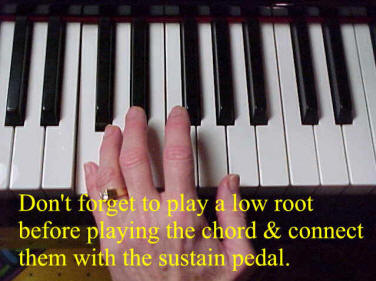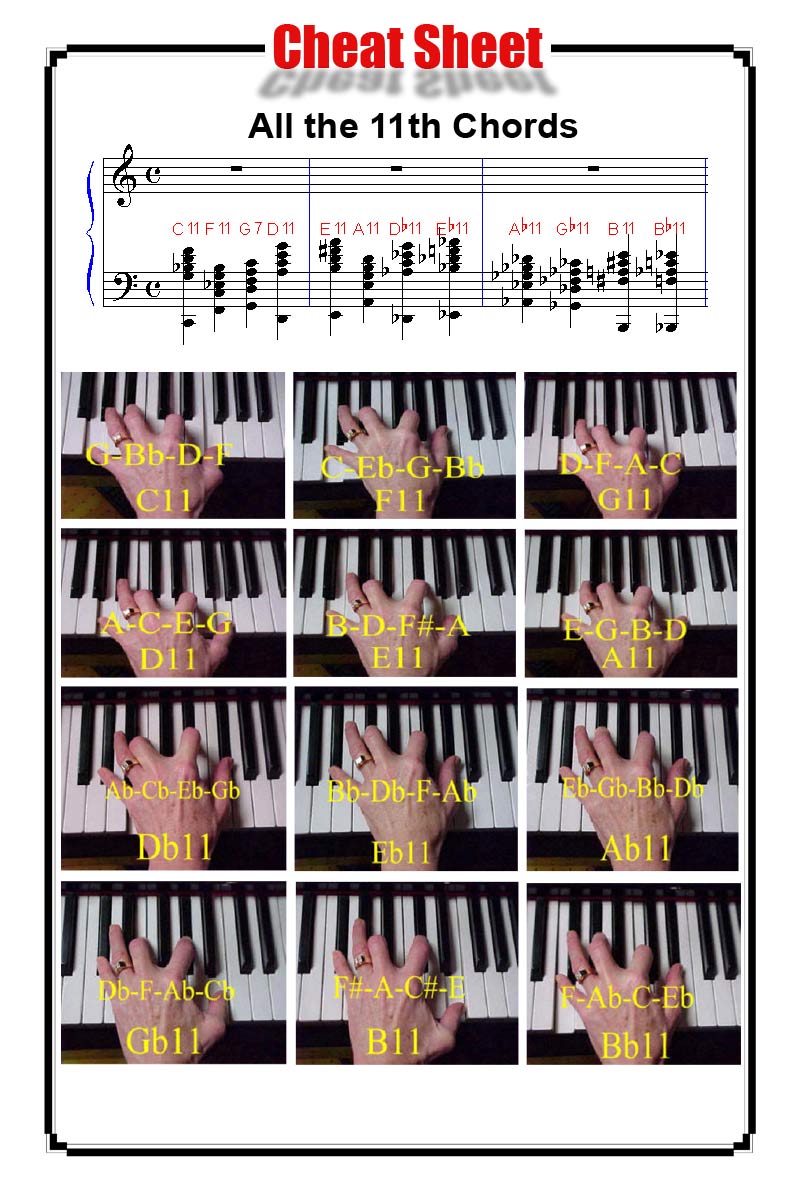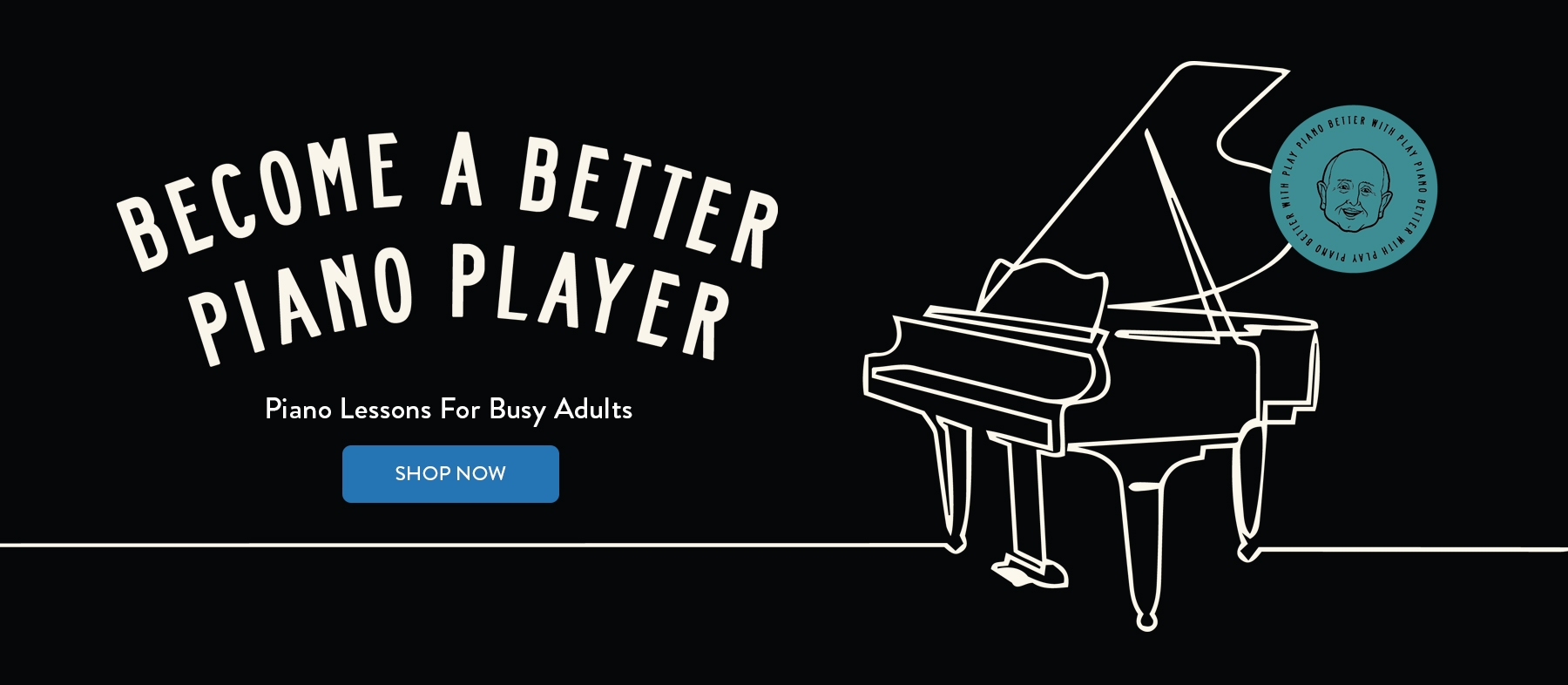Secrets of Exciting Chords & Chord Progressions: Lesson Thirteen
All The 11th Piano Chords
One of the most exciting chord types you’ll ever learn…
Hello again, and welcome to the next edition of the newsletter. I hope you are enjoying learning about all the chords in the world — and we’re going to cover them ALL before we’re done — you’ll know more about chords than 99% of the people in the world — believe it or not, it’s true.
If you recall the first week we learned about the three chords you absolutely, positively CAN’T do without. Then the next week we took an airplane ride over Chordland just to get the lay of the land — the overview of the world of chords.
Then in the next weeks lesson we showed you how easy it is to learn ALL the major chords (there are 12 of them) and be able to play them in seconds — not hours or days or weeks or months or years. Some people go through their entire lives not being sure about what such and such a major chord is — and it’s all so unnecessary, because you can memorize them in just a few minutes, and learn to play them in 12 seconds or less – one second per chord. I have had many private students over the years who could play them all in as little as 5 seconds — one little gal (she was about 12 at the time) had particularly fast hands, and could play them in – believe it or not – 3 seconds! I have slow hands with fat fingers, and yet I can play them in something like 5 or 6 seconds.
Next you learned how to easily turn major chords into minor chords just by moving one key one-half step — by lowering the 3rd of the major chord.
Then we learned diminished triads — just by lowering the 3rd and the 5th of a major chord 1/2 step.
Then we learned inversions — how to stand chords on their head.
And finally, we took up augmented triads — formed by simply raising the 5th of a major triad.
Then we learned about major 6th chords. They are 4-note chords — the root, 3rd, 5th — just like a major chord, but you also add the 6th degree of the scale to the major triad. The 6th is ALWAYS one whole step above the 5th — never a half step — so they are real easy to find.
Then we changed those major 6th chords into minor 6th chords just by altering the 3rd 1/2 step — in other words, a minor triad with a 6th on top.
Then we took up 7th chords — very important chords, because they move you from one tonal base to another tonal base. In other words, when we move from the C chord to the F chord, we often use C7 between the two as a “connector”. After that we learned about major 7th chords, and finally, 9th chords.
Today we’re going to learn to form an 11th chord. It’s just like the 9th chord, except you move your left thumb up from the 3rd of the chord to the 4th — which in this case is known as the 11th, because it includes a 9th and a 7th under it. So:
| An 11th Piano Chord = Get your chord in 2nd inversion, add the 7th and 9th, and also add the 11th |
(Remember that accidentals carry over in the same measure!)
(The lowest note in each case is the root of the chord — even though I have shown them above directly under the chord, be sure to play that note before you play the chord, and use your sustain pedal to “hook the two parts together”.


Go through all 12 major chords, inverting every one. Then go through all the 12 minor chords, inverting each one up and down the keyboard — hands alone, then hands together. Then go through all 12 diminished chords, inverting each one up and down the keyboard — each hand alone, then together. Then play the 12 augmented chords, up and down the keyboard. Then skip around from major to minor to diminished to augmented, etc.
Then add minor 6th chords to your repertoire of chords. They are shown in root position above, but you know that you can turn them upside down ’till the cows come home — invert them — so go to it!
And then add 7th chords and their inversions….then major 7th chords…..then 9th chords, and now, 11th chords.
Do you feel like you’re getting a handle on chords yet? You ought to — I know we’re going slowly, but chords are SO important that you absolutely MUST master them if you are ever going to play the piano like you hope to!
So here’s our revised chord scorecard:
| 12 major piano chords to 12 minor piano chords to 12 diminished piano chords to 12 augmented piano chords and 12 major 6th piano chords and 12 minor 6th piano chords and a dozen 7th piano chords and a dozen 9th piano chords and now… a dozen 11th piano chords and of course you can play… 3 or 4 inversions of each, which means you can now play At least 700 piano chords! In one octave, yet! Hello! Are you doing great, or what? |
Next week we will add 12 more chords to our growing list of piano chords we can play by adding 13th chords to our stash. (Actually 60 more chords, since each 5-note chord such as a 13th can be inverted 5 ways — root position, 1st inversion, 2nd inversion, 3rd inversion, and 4th inversion!)
If you would like to add exciting runs and fills and riffs to your piano playing, consider investing in this course:




